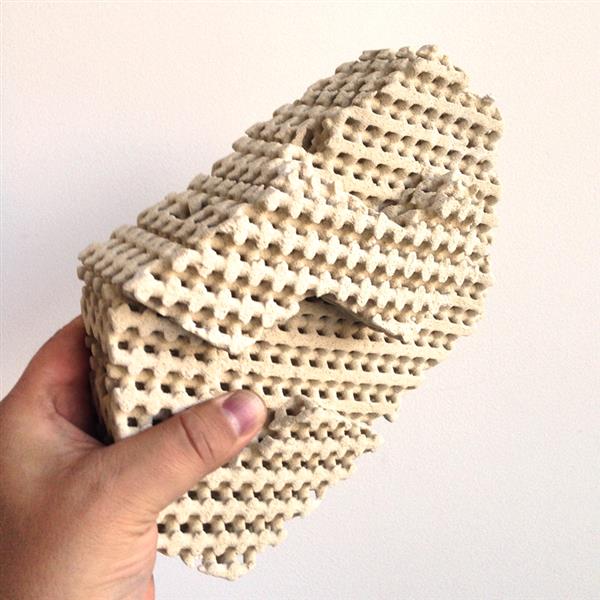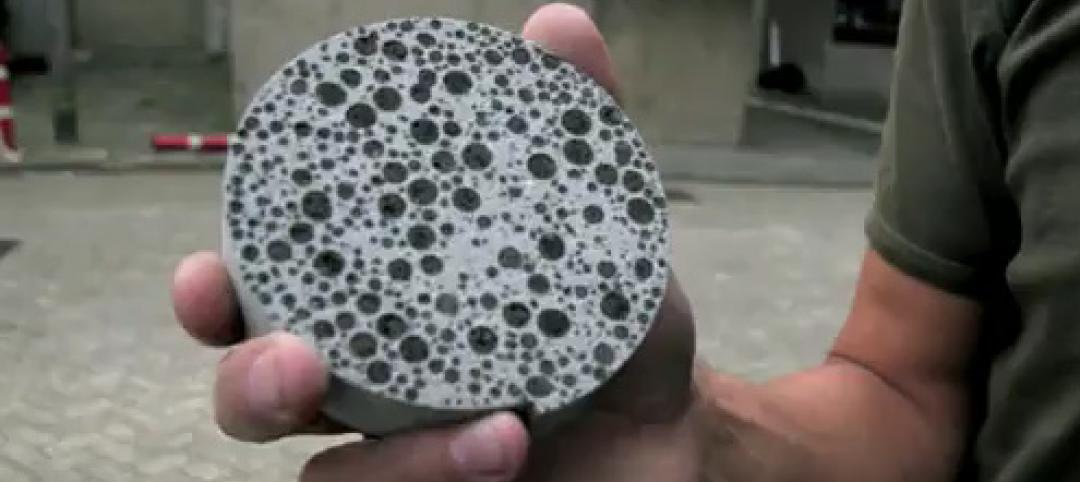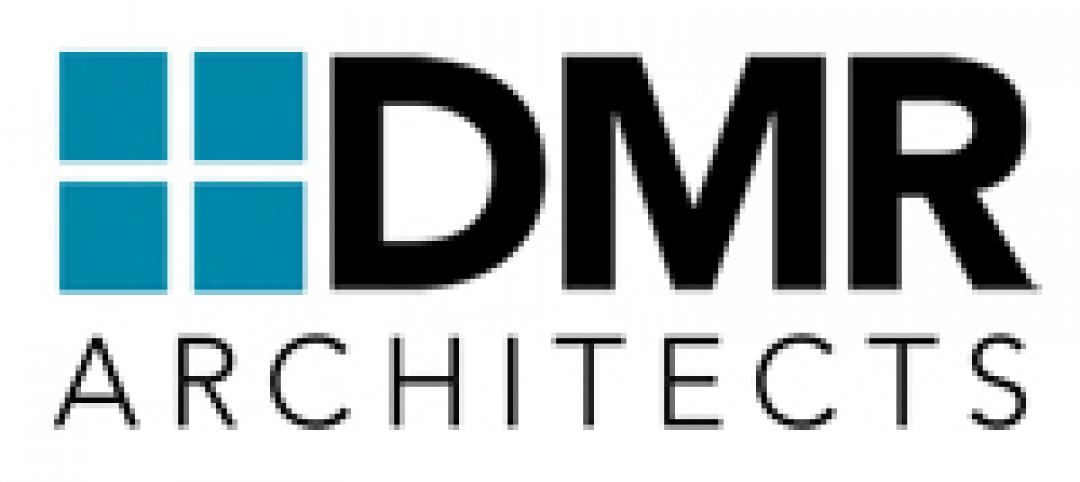In desert climates, extreme heat and dry air are not just uncomfortable, they can be life-threatening. Virginia San Fratello and Ronald Rael of The Emerging Objects Corporation may have found a natural cooling solution for increased safety and comfort in arid areas.
Evaporative cooling is the process of adding water to the air, causing the temperature to drop, and increasing the moisture in the air, 3ders reports. The technique itself is ancient, but San Fratello and Rael have applied it to a 3D-printed brick prototype, called Cool Brick.
The prototype was inspired by the Muscatese Evaporative cooling window, a system that combines a wood screen and a ceramic vessel filled with water. The Cool Brick is made of porous ceramic bricks set in mortar. The bricks absorb water and are designed as 3D lattices that allow air to pass through the wall.
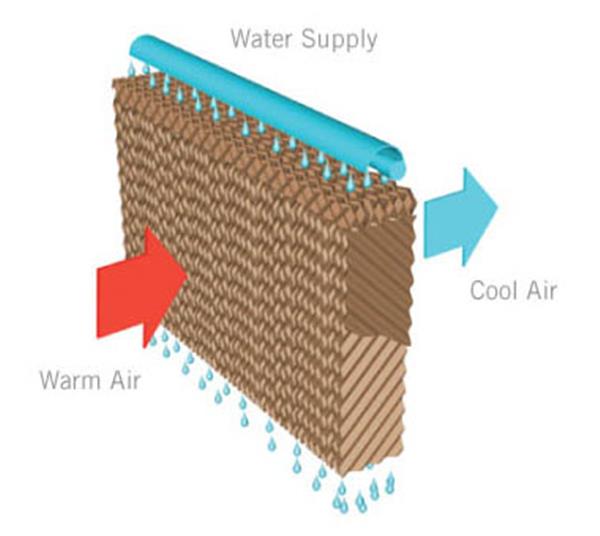
The water held in the micropores of the ceramic bricks evaporates as air moves through the system, bringing cool air into the building interior. This process results in cool, moist air while using less energy than other cooling techniques.
The Cool Bricks are modular and interlocking, meaning that they can be assembled as needed for the particular space where they’re installed. The lattice structure creates a tight bond when set in mortar. Meanwhile, the shape of the brick creates a shaded surface on the wall, keeping that portion of the wall cool.
The Cool Brick can be viewed at Data Clay: Digital Strategies for Parsing the Earth until April 19, 2015, at the San Francisco Museum of Craft and Design. Tehton 3D, a 3D printing company that specializes in custom applications for ceramic 3D printing, sponsored the project.
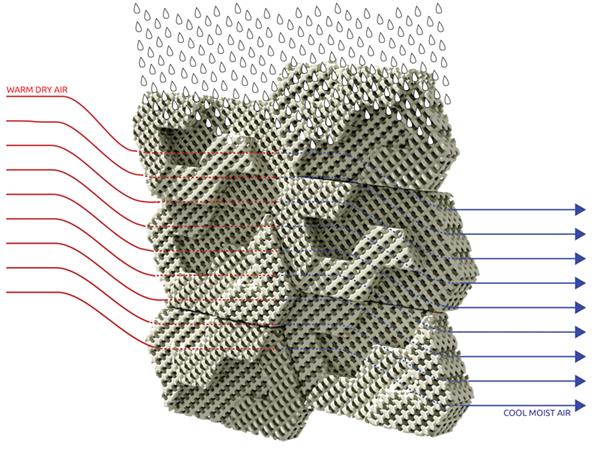
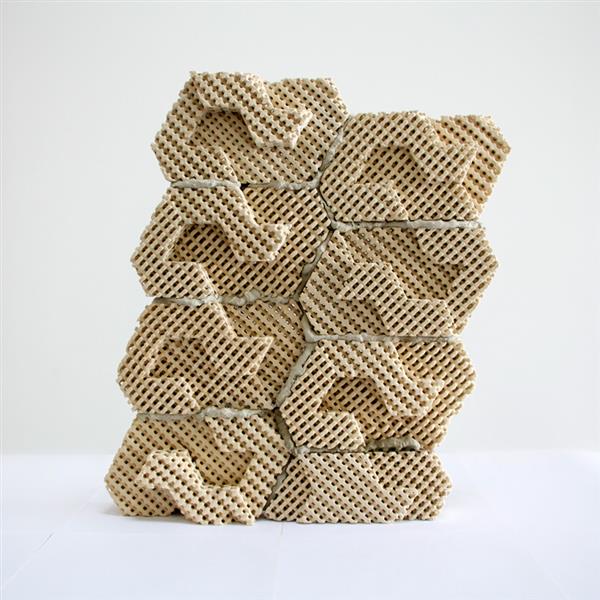
Related Stories
| Feb 22, 2013
Dutch team's 'bioconcrete' can heal itself
Two researchers from Delft Technical University in Holland have developed a self-healing cement that can stop microcracks from forming in concrete.
| Oct 9, 2012
Celebrating brick in architecture
The Brick Industry Association’s 2012 Brick in Architecture Awards put the spotlight on new projects that make creative use of one of humankind’s oldest and most beloved building materials.
| Jun 29, 2012
SOM writes a new chapter at Cincinnati’s The Christ Hospital
The 332,000–sf design draws on the predominantly red brick character of The Christ Hospital’s existing buildings, interpreting it in a fresh and contemporary manner that fits well within the historic Mt. Auburn neighborhood while reflecting the institution’s dedication to experience, efficiency, flexibility, innovation and brand.
| Jun 25, 2012
AIA-NJ honors DMR Architects
The academic building, completed in 2009, provides classrooms, computer labs, faculty offices, and meeting spaces for the College, which has a steady 7% annual increase in enrollment.
| Jun 8, 2012
Nauset Construction completing sustainable dorm for Brooks School
Student input on green elements provides learning experience.
| Jun 4, 2012
Brownfield goes green
Chicago Center for Green Technology uses high-speed, energy-efficient hand dryers to share its green message and earn LEED credits.
| Jun 1, 2012
New BD+C University Course on Insulated Metal Panels available
By completing this course, you earn 1.0 HSW/SD AIA Learning Units.
| Jun 1, 2012
AIA 2030 Commitment Program reports new results
The full report contains participating firm demographics, energy reduction initiatives undertaken by firms, anecdotal accounts, and lessons learned.
| Jun 1, 2012
K-State Olathe Innovation Campus receives LEED Silver
Aspects of the design included a curtain wall and punched openings allowing natural light deep into the building, regional materials were used, which minimized the need for heavy hauling, and much of the final material included pre and post-consumer recycled content.


